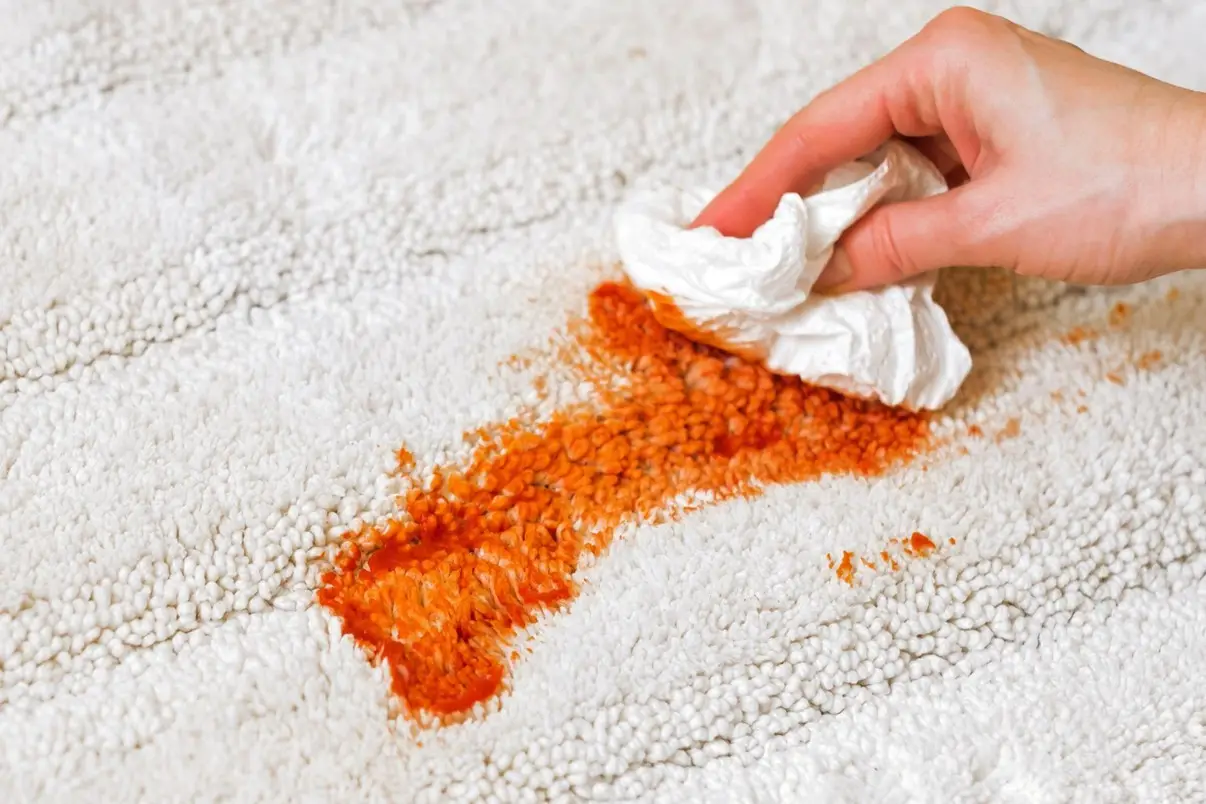
I remember the first time I noticed it — a strange, almost neon-orange blotch on my favorite grey hand towel. It didn’t look like a normal stain; it had a weird glow, like someone had taken a highlighter to it. I thought it was rust from the towel bar or maybe a spill I’d forgotten about. I tossed it in the wash with extra detergent, confident it would come out. It didn’t.
Weeks later, more towels fell victim. My bathroom began to look like it had been atta:cked by a pumpkin spice poltergeist. If you’ve seen towels, pillowcases, or shirts develop stubborn orange spots, you’re not imagining things. The culprits are amazingly common.
1. Benzoyl Peroxide — The Big Offender
The main reason? Benzoyl peroxide — a popular ingredient in acne creams and cleansers. It doesn’t stain in the usual way. Instead, it bleaches the fabric’s dye, leaving behind an orange or yellowish patch. On dark towels, the contrast is even more obvious.

Once the color is deprived from the fibers, no amount of scrubbing or soaking will bring it back. My “aha” moment came when I knew the marks matched where my face and hands touched the towel after washing up at night. Even brief contact count up over time.
2. Rust and Iron in Water
Orange marks are not always caused by chemical burns from cosmetics. If you have iron-rich water, especially well water, it might cause rusty freckles on textiles. I discovered this when visiting a buddy in the countryside. Two washes later, my white towel was covered with small orange flecks.
The solution was not extra detergent, but a rust-removing laundry ingredient. It bonds to the iron before settling into the fabric.
3. Hair Products and Self-Tanners

Some hair products and self-tanners leave stubborn orange or brown stains on skin or hair, even after “dry”. Friction from drying transfers pigments to towels. My clue? I have faint orange markings on my hair towels despite never used self-tanner. It turns out that my “warmth-enhancing” shampoo included exactly enough pigment to cause the damage.
4. Cleaning Products That Bleach
Bleach and hydrogen peroxide aren’t just for laundry. They’re also present in surface sprays, toilet cleansers, and disinfection wipes. If you use them and wipe your hands on a towel, you may unintentionally leave bleach marks.
A friend suspected her washing machine was turning towels pink. In truth, she was using spray to clean her hands before drying them.
How I Prevent It Now
Once I knew the causes, I treated towels like valuable clothing:
- For facial care, use white towels; benzoyl peroxide stains will not show.
- Wait for things to dry—especially acne treatments and self-tanner.
- Use filtered water or rust remover to stop mineral stains before they set.
- Maintain a separate hair towel because old towels absorb pigment from shampoos and dyes.
Can You Fix the Damage?

If the mark is caused with benzoyl peroxide or bleach, it will be permanent. Your options:
- Color the entire towel a darker shade.
- Re-use it as a cleaning or hair towel.
- Bleach the entire towel for a uniform appearance.
- Rust stains are more difficult to remove, but you can use fabric-safe rust removers.
- I’ve salvaged a few pillowcases in this manner.
Noticing the Difference
- Chemical bleaching causes big, uneven areas to appear when hands or faces come into contact.
- Mineral staining manifests as small, dispersed spots.
- Learning to read the “pattern” allows you to pinpoint the source and stop blaming a mystery laundry curse.
Final Takeaway
I’m not stain-free—I still forget I’m wearing acne cream on occasion—but my towel casualties have decreased from every few months to one per year or two. If your linens are becoming orange, look into your skincare, water quality, and hair care regimen. Identify the perpetrator, guard the “danger zones,” and your towels will stay fresh for much longer.















